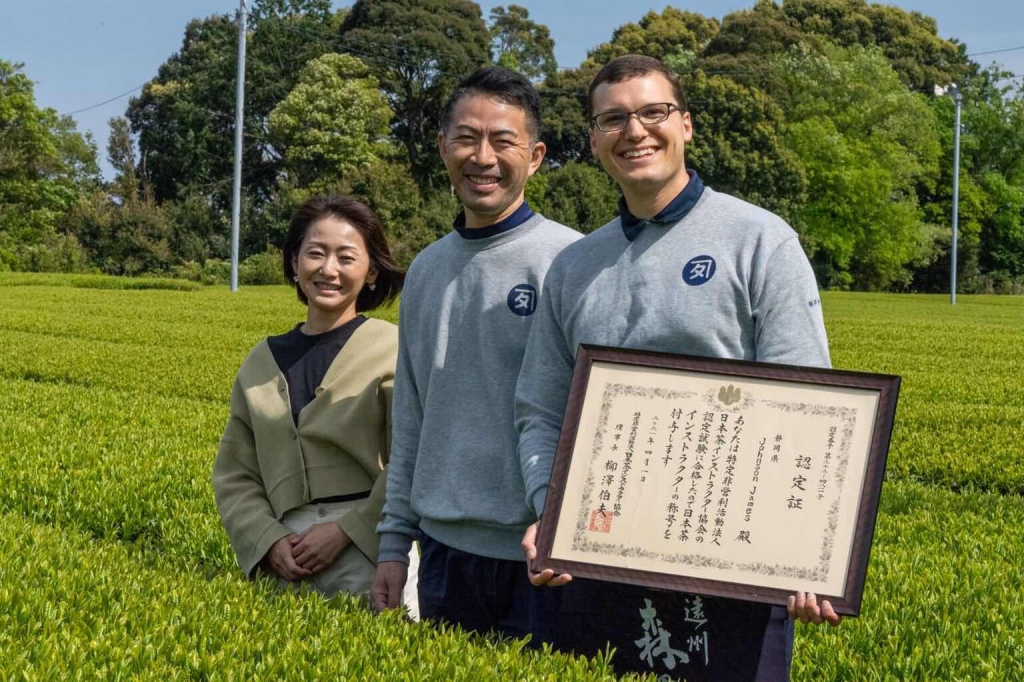James Johnson lives in Shizuoka, dubbed the “tea capital of Japan.” In 2021, he made history as one of the only two Americans to pass the notoriously difficult Nihoncha (Japanese tea) instructor exam, which has a pass rate of 30-40 percent. Now, he works at the sales department of the prestigious Osada Tea company and is imparting his newfound tea knowledge to the world.
How did you jump from English teaching to tea? Did you always love it?
It was kind of unexpected. I liked organic farming and organic vegetables. I was even interested in becoming a farmer, perhaps in Japan, but there was no real money in it. An opportunity then appeared at a Japanese tea company in Kakegawa, Shizuoka so I jumped at the chance. I ended up training and learning about tea for a year. But I decided I didn’t want to work there, so I left.
Then, I got back into English teaching for about a year. At that time, I was already studying to be a Japanese tea instructor. Then, luckily, I met Natsumi Osada [owner of Osada Tea].
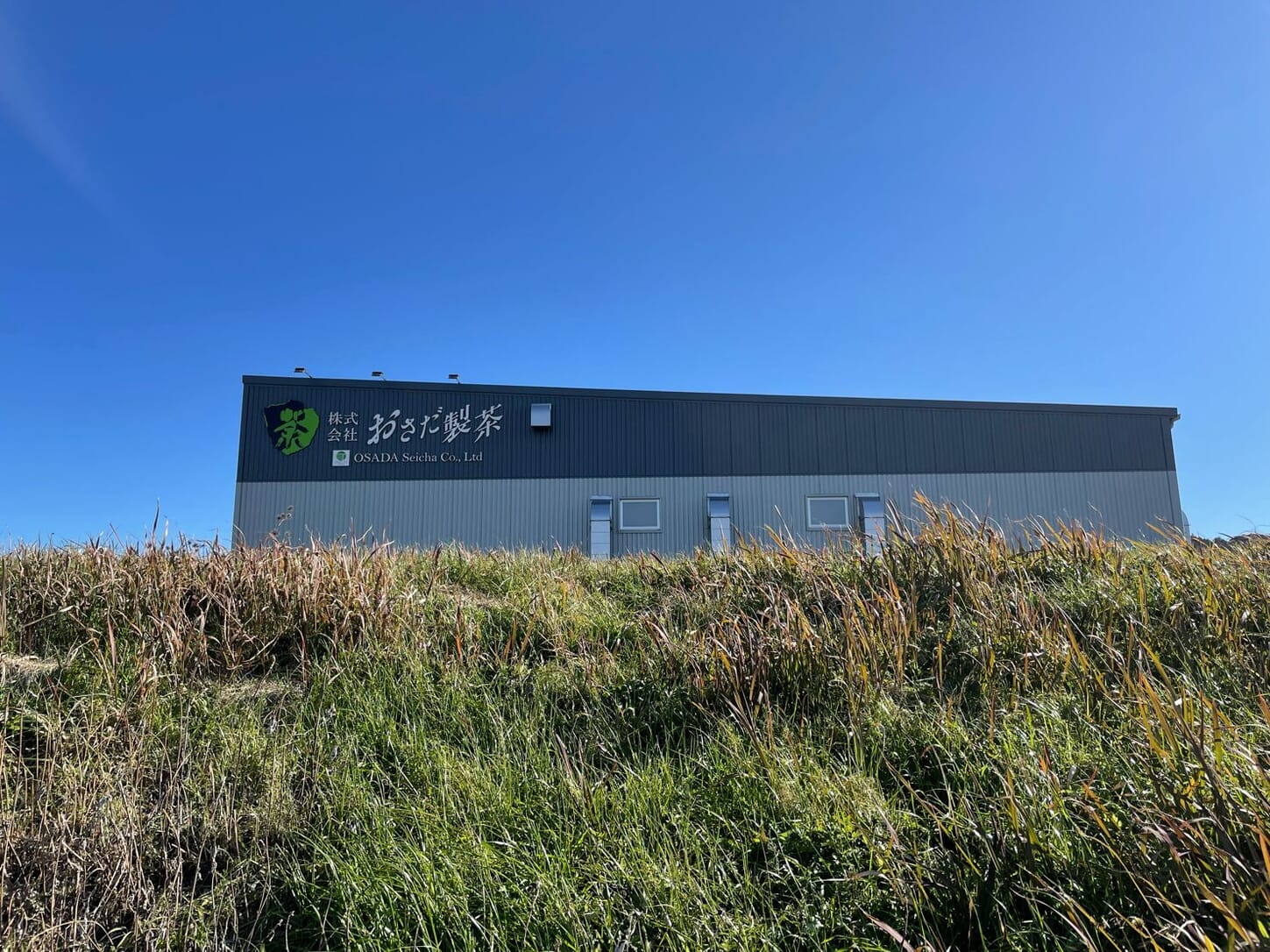
Osada Tea
How difficult was it to pass the tea instructor exam? Do you have any advice for others wishing to take the test?
A lot of people doubted me. I kind of went in there knowing it was going to be tough, but I never doubted myself. I thought it was going to be fun and that’s exactly how it turned out. Thankfully, a lot of good friends supported me, so I just put in the work and studied.
The hard part is that it covers so much content. The test ranges from cultivation, health, chemistry, history, how it’s post-refined and refined from raw leaf to crude tea. It touches everything and it’s all in Japanese. It’s recommended you go through a course before taking the test. And before I started that heavy study, I took another lighter test called the Nihoncha Kentei. If you pass that — if you’re brave enough — go for the instructor one.
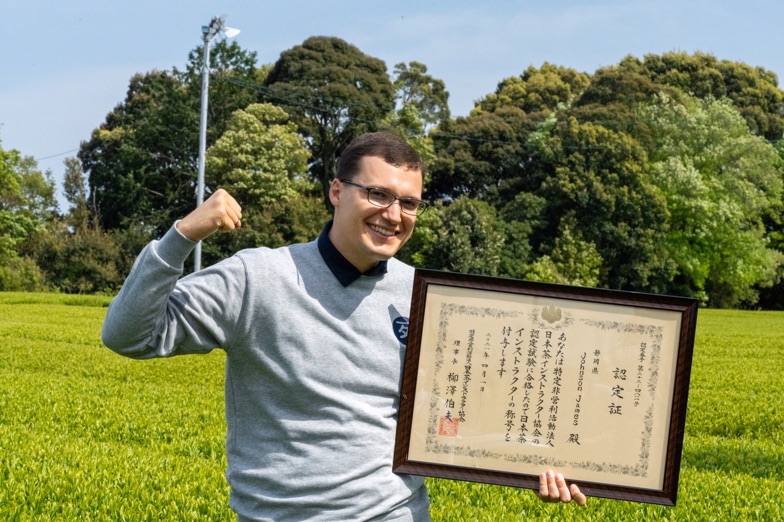
I hope they make it in English, maybe in two or three years. If you don’t understand Japanese, start connecting as much as possible on Instagram or with companies in Japan. There’s a yearly program called the Shizuoka Tea Study Program. Now it’s all online but ordinarily, you come to Japan where you’re shown tea fields and how tea is produced.
If you understand Japanese, study even more (laughs) and then prepare for the test. It took me like six years of studying in Japan before I was ready for this.
How has life changed for you since becoming certified?
I feel a lot more inspired. When I got this, it was like starting anew in Japan. A new life as a tea instructor.
You can get work through the Nihoncha Instructor Association and do tea events and go to elementary schools [to teach about tea]. I could start a tea café. A lot of the foreigners who got this certification run their own businesses.
My friend, Brett, who I took the test with, does brewing events and he teaches Japanese people about tea too.
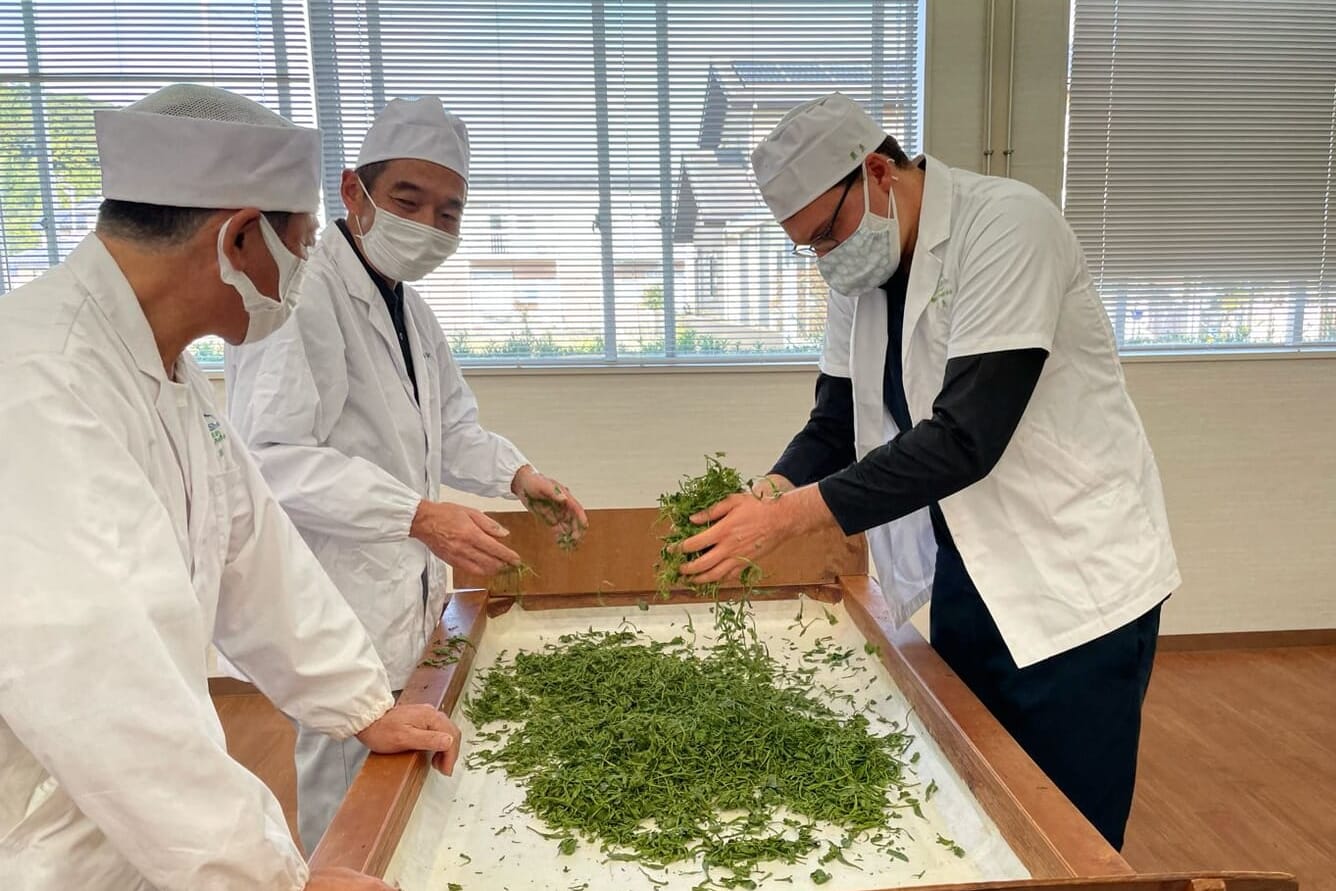
A local Shizuoka Temomi tea group. They roll tea leaves the traditional style, preserving the culture and technique surrounding sencha production.
Is there a difference between how Japanese and people from abroad view tea?
Foreigners tend to want to use more descriptive words, relating it to other foods and drinks, like, “this has an avocado-hint.” Japanese people aren’t like that. They just say, “it’s sweet, or slightly bitter. It has a good balance.” That kind of thing.
I’m guessing the answer is obvious, but which do you prefer, coffee or tea?
Oh, definitely tea. Don’t get me wrong, I’ve never bagged on coffee. But I never had that flash of inspiration to study it. There’s something that doesn’t really inspire me about coffee that does for tea. There’s Japanese culture immersed in tea. The history. The cultivation. And of course, the health benefits.
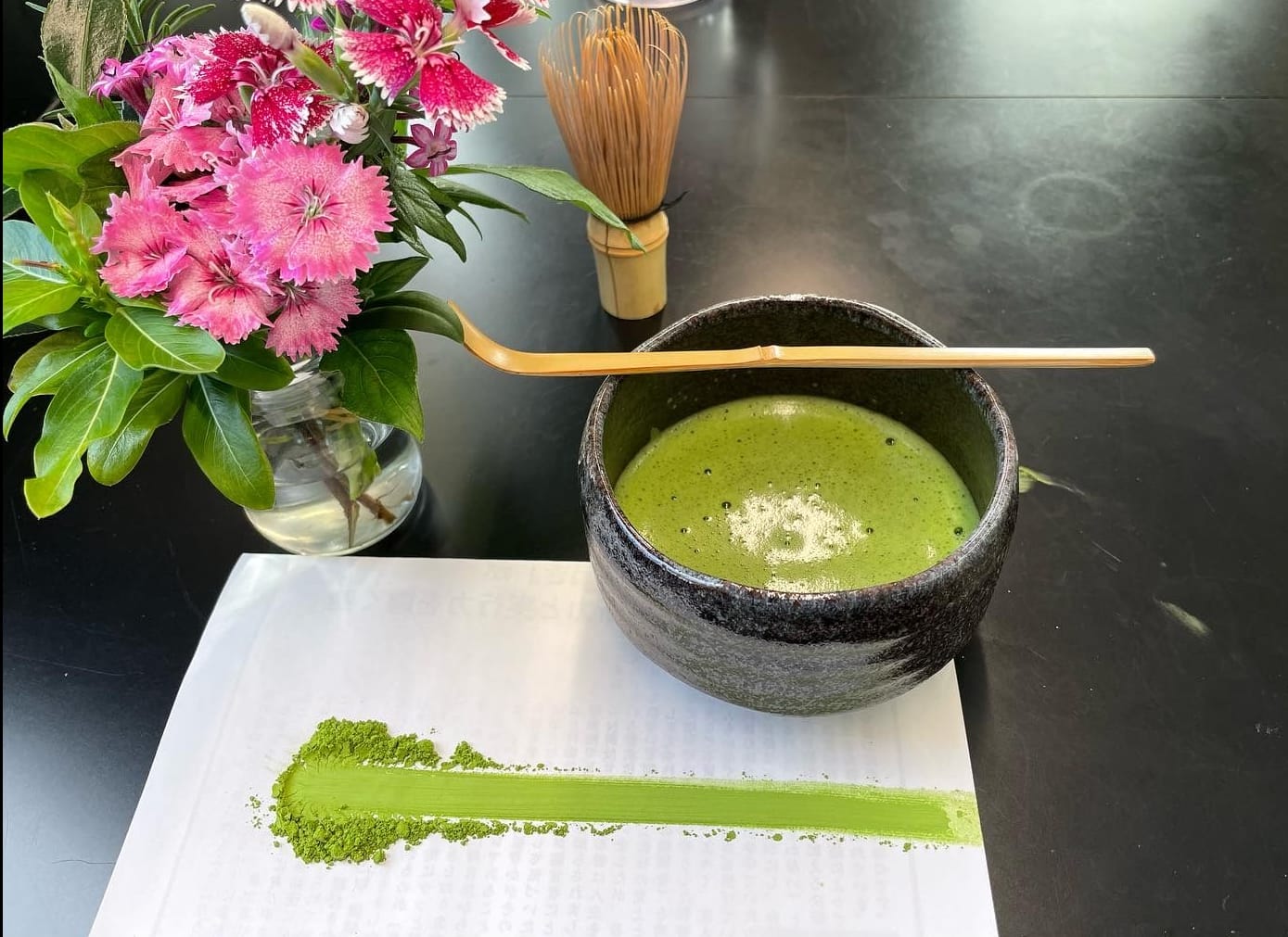
Checking the particle smoothness in matcha manually by drawing a line with your finger.
As a British person, I must ask, how do you make the perfect cup of tea?
I’m American, so I like everything strong and I think more is better. But the perfect cup really depends on the person. Even if you have the same tea, if you brew it in different ways, it will turn out different. For example, if you’re brewing high-quality sencha, you want to lower the temperature to around 60 or 70 degrees.
Personally, I like to lower the water temperature and watch the leaf unfurl in the teapot, then pour for myself and someone else. Taking pictures of each step, smelling the aroma and then writing about the tea, that is both fun, educational and meditative.
You now work for the sales department of Osada Tea. How do you lead customers to their perfect tea pairing?
It’s about understanding what they want and understanding their scope. What about Japanese tea inspires them so we can help them find that as realistically as possible? That could be the specific cultivar or type, for example, organic oolong versus organic sencha.
I always tell people that working in tea is good for me because it puts me in touch with like-minded people who are interested in Japanese culture and tea.
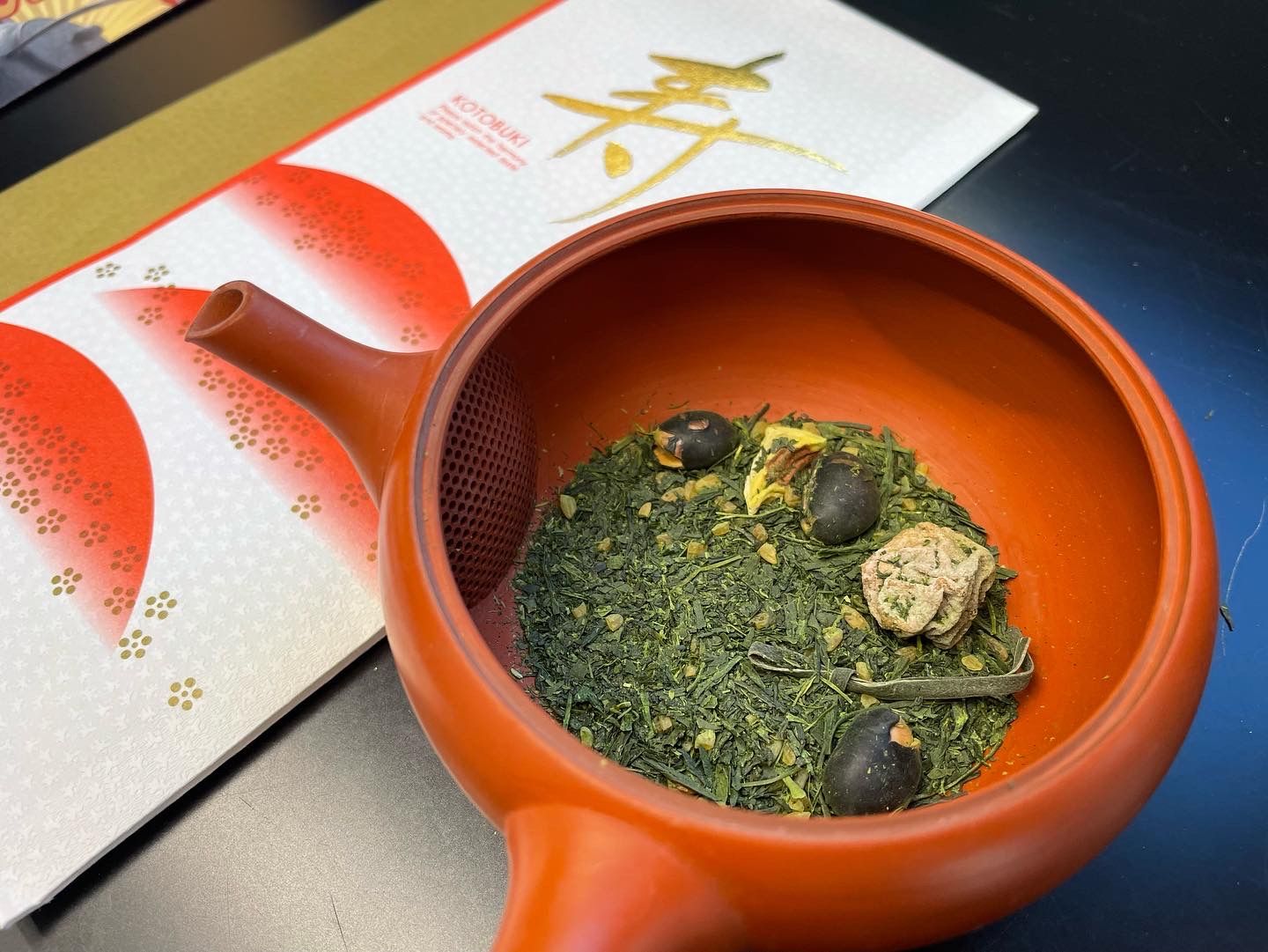
Daifukucha, a special New Year related tea blend
As an ambassador for the prefecture, what makes Shizuoka tea so special?
We have a good balance of good-quality mountain tea and open-field tea. Also having Mount Fuji with its fresh and natural rivers running from it is a plus. The area that I work in has really beautiful organic tea plantations in Haruno, which is in the north of Hamamatsu City. Whenever I go up there, it just amazes me every time.
It’s a wide prefecture with a good history of tea development and boasts famous regional teas: from Honyama, which is rich in minerals and was said to be tea of choice for Shogun Tokugawa Ieyasu, to Kawane, a high-quality tea. Then there’s Kakegawa, a deep-steamed tea producer and Tenryu, a beautiful mountain sencha.
This variety within the same prefecture and ability to meet demand for bulk buying makes Shizuoka a leading tea producer. It is also where the World Tea Festival is always held.
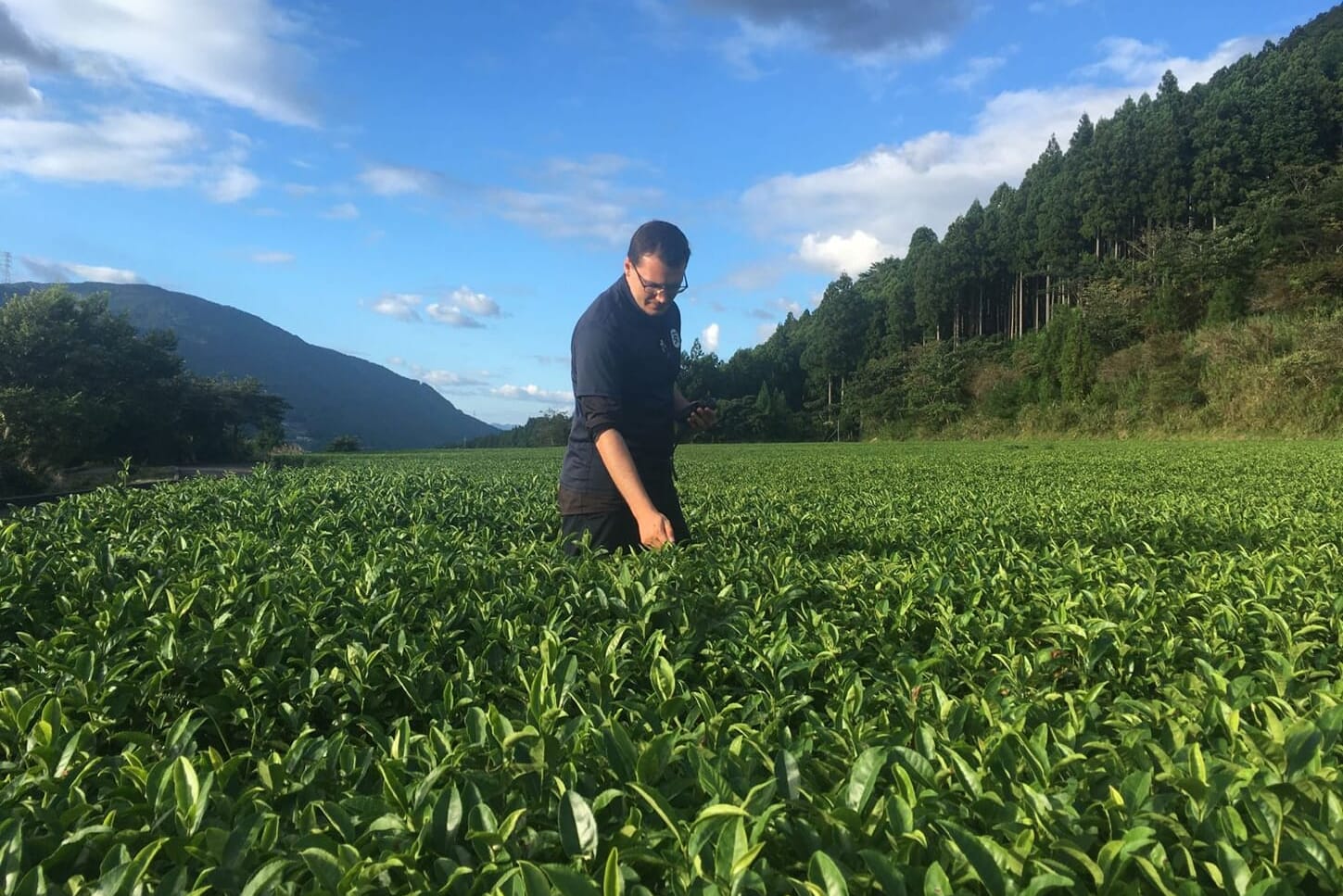
Tenryu district of Hamamatsu City
What’s your favorite type of Japanese tea?
My entry tea was deep-steamed fukamushi sencha. I fell in love with it. It’s a deep-emerald green. But I’ve branched out since.
Recently, I’ve been really into organic yamabuki nadeshiko, fermented with a black koji which is also used to make miso and soy sauce. It’s refreshing and innovative. It was created by Osada.
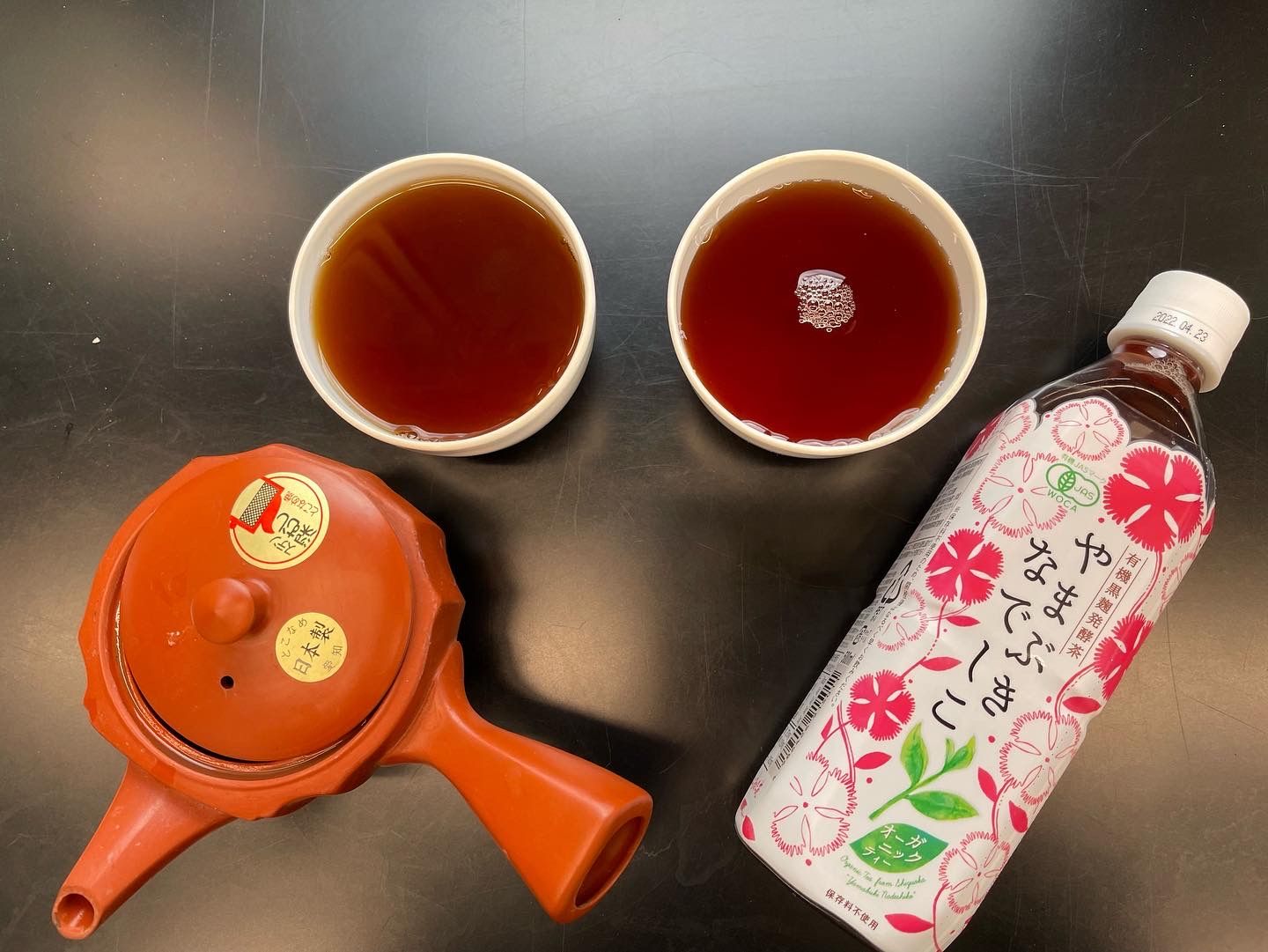
Yamabuki Nadeshiko, a post-fermented Japanese dark tea produced using controlled microbial fermentation, undergoing retort sterilization prior to and after.
Census shows the number of tea farms has sharply decreased in Japan. What does the future of Japanese tea look like?
Unfortunately, it looks like there’s a decreasing demand for tea [leaf]. I think the younger generation is not interested in the whole process. There are a lot of Japanese tea lovers, but the mass audience wants coffee, or instant, quick tea. And that’s where the business is.
The future of tea in Japan is probably more mass-produced bottled tea. But it’s important to try to re-introduce the traditional style to the younger generation. I’ll try to do that as long as I’m in tea.
Connect with James on LinkedIn.
Read more about Japanese tea:
Kyoto’s Tea Masters Explain Why Drinking Matcha is Essential During the Covid-19 Pandemic

